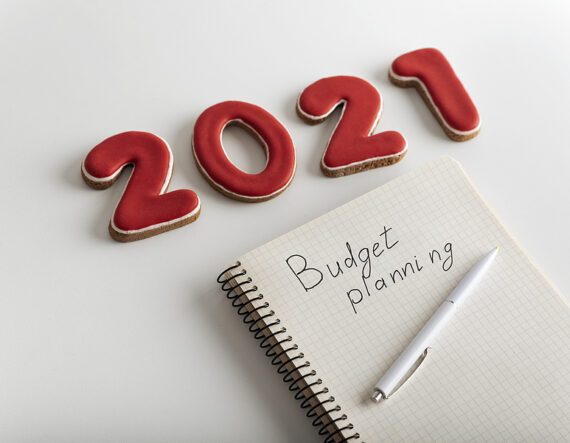
How to Make a Financial Plan for Your Goals in 2021
We have talked before about setting financial goals for 2021. Given the difficult year that was 2020, it seems likely that many people will set New Year’s resolutions around their financial well-being. Because your finances are so important, you will want to make sure that you set yourself up for success and do not struggle to gain traction. The key to hitting your financial goals is to have a financial plan in place that gives you the structure you need to be successful. Here are some suggestions for how to do just that.
Clearly Define Your Goal
The first step is to define your goal. Be clear about exactly what you want to achieve. Again, this goes back to the framework that your goals should be SMART. As a reminder, that means they should be:
Specific
Measurable
Achievable
Relevant
Time-based
As an example, don’t make a goal “to pay off debt.” Instead, make a goal to pay off a specific number of credit cards (like three credit card debts). Or even better, make a goal to pay off an exact amount (say, $10,000 of your debt). Having this clarity will give you a good vision for exactly what you want to achieve, and that will determine the steps you need to take to get there.
Think about Reverse Engineering Your Goal
Sometimes when you are preparing goals, it can be helpful and motivating to look at examples of what others have done.
One of the most famous examples of goal setting and achievement is the first moon landing. In 1961, President Kennedy announced the goal that America would put an astronaut on the moon by the end of the decade. At the time of this bold goal, no American had spent more than 15 minutes in space!
This was a lofty goal by all accounts, though it probably fit nicely into the SMART framework. Importantly, it was a clear goal with a set timeline. This meant that everyone working toward it—mostly the brilliant folks at NASA—could develop the steps required to reach the goal. Starting with the end result—the goal—they could work backwards and determine each piece that would need to be in place in order to be successful. They were successful, and the rest is history.
You can approach your goals like this too. Using the goal to repay $10,000 in debt is again a helpful example. First, make sure there is an end date for the goal. Let’s say it’s feasible to pay it off in one year. Then your goal would be to “pay off $10,000 in debt by the end of 2021.” What steps or sub-goals would you need to achieve this goal? Maybe it’s that $7,500 should be paid off by October, $5,000 should be paid off by July, and $2,500 should be paid by April.
That’s a simple example, but the concept can be applied to many goals. When you start with the end result, two things happen. First, you begin to visualize your success, because you are beginning with the assumption that your goal is completed. This can give you a huge psychological boost. Second, you can identify the steps that will be necessary to reach the end goal.
Put Pen to Paper
As part of your financial plan, you should write down each financial goal you have. Then, list out the various sub-goals you will need to achieve along the way. There are many different ways you could write this down to map it out. If you want to see some great examples, and access free templates, you can check out this post on goal trees from a financial independence blogger.
You will need to put more in writing, too. Just putting your goals on paper and getting organized with what you hope to accomplish probably is not enough for most people. You will also need to put your current financial situation into writing—in other words make a budget.
This is the most critical part of a financial plan, because it will reflect your day-to-day reality. Budgeting at the beginning of the year is an especially helpful exercise because it allows you to review the previous year’s expenses across all spending categories and provides the chance to plan for the upcoming year. This is the perfect opportunity to make a plan for reducing your spending. You will likely find categories that provide opportunities to make cuts and spend less than last year.
Making these cuts—and keeping up with them all year long—may even be sub-goals toward your larger financial goals. Some cuts can be made at once, like reducing a monthly bill such as when you cut out cable. Others will be ongoing cuts throughout the year, such as reducing your grocery budget. Reductions to your spending that occur time and time again throughout the year could be listed in your financial plan as weekly or monthly sub-goals, and your budget will allow you to check in frequently to see how you are doing.
There are Many Tools to Help
You can make your financial plan with literal pen and paper, or use some of the many digital tools available. The NFCC has a helpful budget planner that would be a great start. There are many sophisticated budgeting and financial planning software programs that can help, too. Think carefully before paying for such a service. While that may be helpful, it’s also a cost that will add up over time. And budgeting manually may be a better alternative because it forces you to take a more critical look at the numbers.
Whatever you decide, the important thing is to keep track of your goals, break them into sub-goals when needed, and budget each month. Taking these steps will put you well on your way to achieving your 2021 financial goals. If you need more assistance, remember that the NFCC is here to help.
The post How to Make a Financial Plan for Your Goals in 2021 appeared first on NFCC.
Read more: nfcc.org








